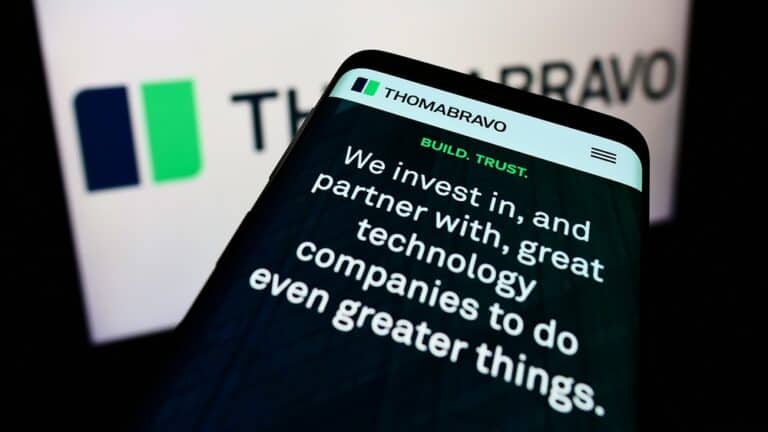Thoma Bravo continues to make waves in the tech sector. Their acquisitions consistently prove successful, often resulting in substantial profits when the private equity firm sells its portfolio companies. What’s behind Thoma Bravo’s success as the technology expert among investment firms?
The firm’s strategy is remarkably straightforward. They identify and acquire the leading player in specific B2B software segments and focus on optimal management. According to co-founder Orlando Bravo, they then typically find buyers willing to pay significantly more than their initial investment. This approach has served them well, generating billions in revenue from various successful exits.
Buy and Build Philosophy
At its core, Thoma Bravo’s strategy centers on “buy and build.” Take Barracuda Networks, for example: purchased for $1.6 billion in 2018 and sold to KKR in 2022 for $4 billion. The firm’s portfolio heavily emphasizes cybersecurity, including companies like Sophos, Proofpoint, Ping Identity, and Darktrace. The recent move by Sophos to acquire competitor Secureworks demonstrates Thoma Bravo’s occasional interest in market consolidation, though this isn’t their primary approach.
Notably, Thoma Bravo doesn’t always follow market trends. When tech valuations tumbled after their 2022 peak, the firm continued investing. Today, Orlando Bravo maintains that timing is crucial for both buying and selling, even as deal processes have slowed. “We are always buying and we are always selling, regardless of market conditions,” he says, acknowledging that market dynamics are constantly shifting and impossible to predict six months ahead.
While Barracuda Networks represents a relatively quick turnaround, some investments span a decade or more. Dynatrace is a prime example, acquired in 2014 as part of Compuware’s APM business unit and only fully divested from Thoma Bravo this year. At the time of purchase, Compuware’s struggling mainframe unit made the deal unattractive to other private equity firms.
Thoma Bravo partner Chip Virnig details the subsequent transformation: they sold an unnecessary Detroit facility, eliminated legacy systems, and revitalized the mainframe service. Dynatrace merged with Keynote, another observability company Thoma Bravo had acquired after initially missing out on Dynatrace itself. The company has since evolved into a cutting-edge player, featuring capabilities typically associated with innovative startups. Rather than focusing on short-term gains or legacy software, Thoma Bravo emphasizes nurturing promising companies. Sometimes this involves mergers under their umbrella, like the May combination of LogRhythm and Exabeam to create a comprehensive SOC platform.
Also read: Exabeam and LogRhythm merger complete: one big SOC platform
Not Every Deal Succeeds
Many acquisitions don’t come easily to Thoma Bravo. Both Dynatrace and the recently acquired Darktrace ($5 billion) required persistence. Some deals, like the attempted SUSE acquisition in 2022, never materialize. Given the firm’s impressive track record, their interest alone might be considered a compliment, suggesting a software maker’s potential. Still, failed acquisitions raise the question: what might have been under Thoma Bravo’s leadership?
Is their judgment perfect? Certainly not. Their investment in FTX, Sam Bankman-Fried’s now-collapsed crypto platform, proved disastrous. After Bankman-Fried’s 25-year prison sentence for fraud this year, Orlando Bravo declared in September that crypto was off-limits: “Once you make a mistake and once you get burned on something, our philosophy and my philosophy is that you never touch it again.” Clearly, some tech segments are now permanently off Thoma Bravo’s radar.
One distinguishing characteristic is their transparency. Beyond frequent executive interviews, their podcast “Behind the Deal” offers clear insights into their decision-making process. This reveals deep technology sector knowledge beyond mere profit-seeking. Their approach to portfolio companies appears genuinely focused on value creation. This philosophy extends to their sponsored Cyber Consortium, which combines public and private cybersecurity expertise, though its impact remains to be seen alongside competing initiatives from tech giants like OpenAI, Nvidia, Google, Microsoft, and AWS.
Conclusion: A Reliable Industry Barometer
Despite the FTX mishap, Thoma Bravo serves as a reliable gauge of the tech industry’s direction. They’ve consistently demonstrated market insight leading to strong financial returns. Their typically measured, long-term approach has built considerable investor confidence, rewarding them handsomely—as evidenced by $13 billion in returns by 2023.
When Thoma Bravo makes a move, it’s worth understanding why. Given their focus on our coverage area at Techzine, we expect to continue reporting on their activities regularly.
Continue reading: Schneider Electric prepares acquisition of data center cooling firm Motivair
